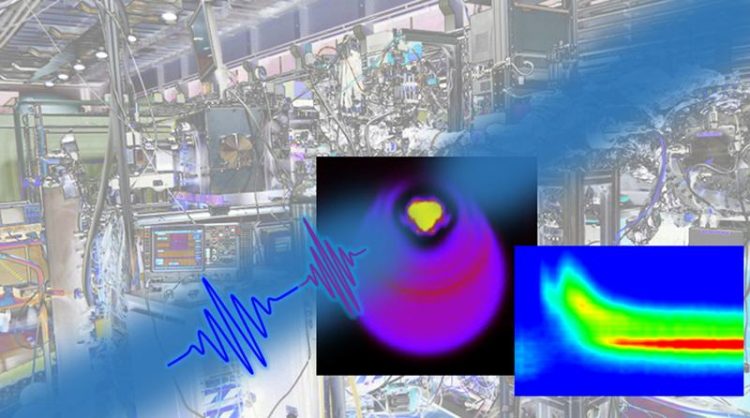Freiburg researchers investigate ultrafast reaction of superfluid helium triggerd by extreme ultraviolet laser pulses

Excitation of helium nanodroplets by ultra-short laser pulses. Photo: AG Stienkemeier
Lasers generating high-intensity and ultra-short XUV and X-ray pulses give researchers new options for investigating the fundamental properties of matter in great detail. In many such experiments, material samples in the nanometer range are of particular interest.
Some scientists use helium droplets no larger than a few nanometers as a means of transporting and studying embedded molecules and molecular nanostructures. Helium droplets are ideally suited for this purpose because they possess extraordinary properties.
At an extremely low temperature of only 0.37 degrees above absolute zero, they move frictionlessly and are thus considered superfluids. Moreover, helium droplets usually are inert to the embedded molecules’ chemical processes and are completely transparent to infrared and visible light.
The team led by Stienkemeier and Mudrich wanted to find out how one of these superfluid droplets itself reacts when hit directly by an intense XUV laser pulse. The researchers used the world's first and only seeded free-electron laser FERMI in Trieste, Italy, which delivers high-intensity XUV pulses at a wavelength set by the team.
Supported by model calculations, the researchers identified three elementary reaction steps: A very fast localization of electrons, the population of metastable states, and the formation of a bubble that eventually bursts at the surface of the droplets and ejects a single excited helium atom.
“For the first time, we have managed to directly follow these processes in superfluid helium, which take place in an extremely short time,” says Mudrich.
“The results help to understand how nanoparticles interact with energetic radiation and then decay,” Stienkemeier adds. “This is essential information for the work aiming at directly imaging individual nanoparticles,” he explains, “as it is being carried out at new intense radiation sources such as the European X-ray laser XFEL in Hamburg.”
Publication:
Mudrich, M., LaForge, A., Ciavardini, A., O'Keeffe, P., Callegari, C., Coreno, M., Demidovich, A., Devetta, M., Di Fraia, M., Drabbels, M., Finetti, P., Gessner, O., Grazioli, C., Hernando, A., Neumark, D., Ovcharenko, Y., Piseri, P., Plekan, O., Prince, K., Richter, R., Ziemkiewicz, M., Möller, T., Eloranta, J., Pi, M., Barranco, M., Stienkemeier, F. (2020): „Ultrafast relaxation of photoexcited superfluid He nanodroplets“ In: Nature Communications 11. DOI: 10.1038/s41467-019-13681-6
Contact:
Prof. Dr. Frank Stienkemeier
Institute of Physics
University of Freiburg
Phone: 0761/203-7609
E-Mail: stienkemeier@uni-freiburg.de
Media Contact
More Information:
http://www.uni-freiburg.de/All latest news from the category: Physics and Astronomy
This area deals with the fundamental laws and building blocks of nature and how they interact, the properties and the behavior of matter, and research into space and time and their structures.
innovations-report provides in-depth reports and articles on subjects such as astrophysics, laser technologies, nuclear, quantum, particle and solid-state physics, nanotechnologies, planetary research and findings (Mars, Venus) and developments related to the Hubble Telescope.
Newest articles

Webb captures top of iconic horsehead nebula in unprecedented detail
NASA’s James Webb Space Telescope has captured the sharpest infrared images to date of a zoomed-in portion of one of the most distinctive objects in our skies, the Horsehead Nebula….

Cost-effective, high-capacity, and cyclable lithium-ion battery cathodes
Charge-recharge cycling of lithium-superrich iron oxide, a cost-effective and high-capacity cathode for new-generation lithium-ion batteries, can be greatly improved by doping with readily available mineral elements. The energy capacity and…

Novel genetic plant regeneration approach
…without the application of phytohormones. Researchers develop a novel plant regeneration approach by modulating the expression of genes that control plant cell differentiation. For ages now, plants have been the…





















